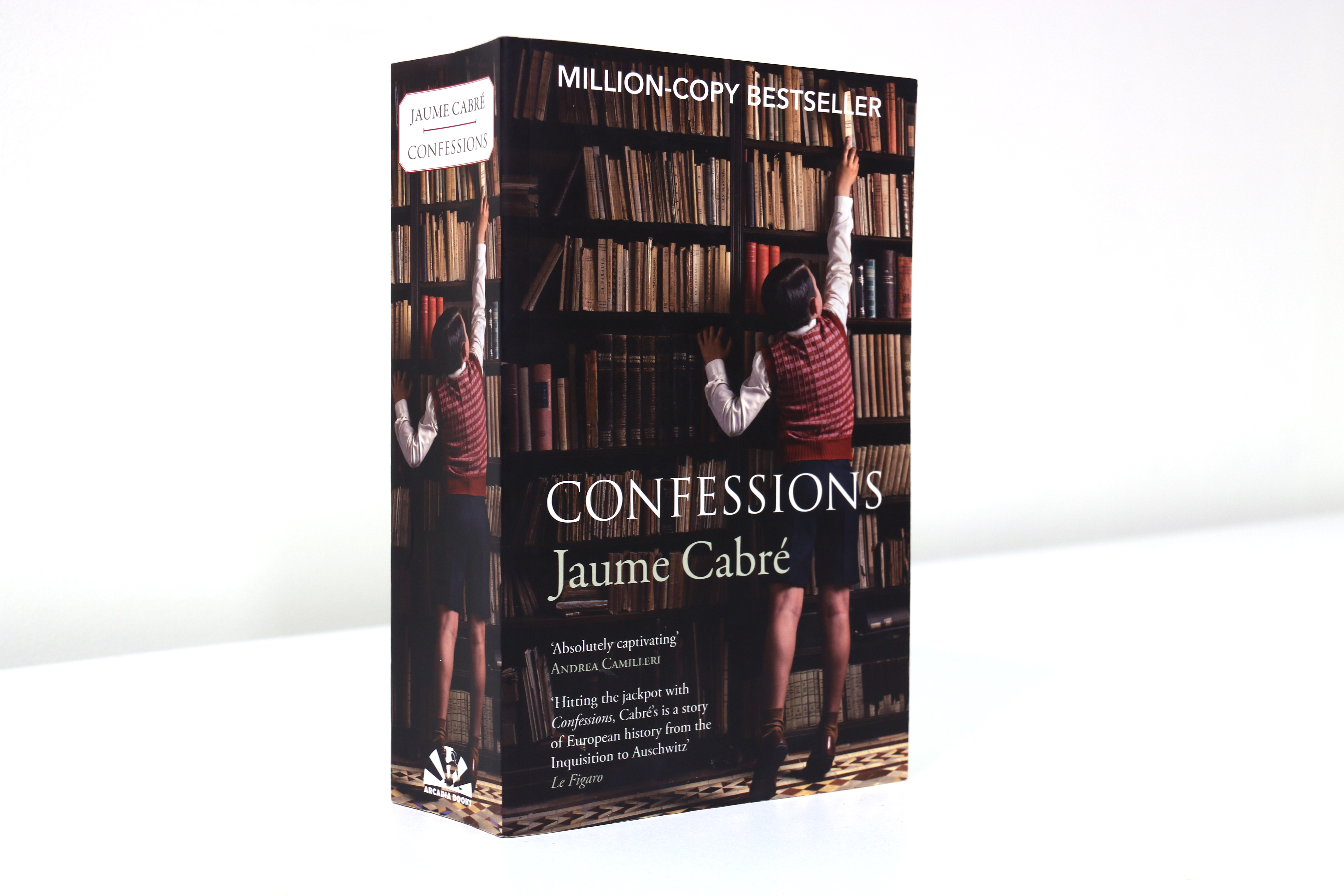Memories, history, and humanity: Confessions by Jaume Cabré
The over 700-page novel might not be light reading, but one that takes the reader on surprisingly fun, relatable, somber, and always human journey through time

“It wasn’t until last night, walking along the wet streets of Vallcarca, that I finally comprehended that being born into my family had been an unforgivable mistake.”
This is the first line of Jaume Cabré’s classic ‘Confessions,’ or ‘Jo Confesso.’ While this might not be light reading in any way – both in literal weight or in subject matter – both the original material and the translation by Mara Faye Lethem produce an engaging, captivating, and even funny tale.
So, what’s the main story?
The plot follows Adrià Ardevol, a Barcelona-born protagonist raised in an apartment in the city’s affluent Eixample neighborhood by a cold, single-minded father and a distraught, inattentive mother.
Little Adrià confides in his toys and finds refuge in the antique shop below his house owned by his father. But, not only in the objects within – but also in those too precious for its shelves, locked away in his father’s study.
Among these items is a revered 18th-century Storioni violin, one closely linked to the fate of the Jews in Nazi Germany. What follows is Adrià’s discovery of not only his own past, but that of his family, his parents, his country and Europe as a whole, and ultimately, a reckoning of what evil truly is.
Subplots of history and memory
The book is seen through the lens of memory – both personal, and historical. Some of the subplots woven into the protagonists’ life story are that of the murderer Jachiam of the Muredas, who planted the tree later used for the Storioni violin; monks in a remote monastery during the Inquisition; and Adrià’s own father Felix and his passionate love story in the streets of Rome, days before the WWI armistice.
Larger themes
With over 700 pages, there are of course larger, overarching themes throughout the book. Already in opening, the plot touches on the concept of regret—essential when dealing with memory. It also speaks of the existence—or not—of a higher power and the rejection of fate.
This rejection of fate also functions as a contradiction of the narrative leading up to the present moment. The book even states that neither “beliefs, nor priests, nor consensual codes” can save our hero, who is now old and contemplating his own mortality.
Other notable elements include referencing other authors who dealt with the evil of the Second World War (like Stefan Zweig, for example), and the violin, an instrument which appears, as it does in other stories, as an almost magical, ancient, or forbidden object.
So, what are some of the things that make it so fun to read?
Our author uses striking imagery and descriptions, which are also captured by translator Mara Faye Lethem. For example, a beautiful woman is described as having “galactic blonde hair” and “lips of furious red.”
Throughout the book, Cabré also weaves in his own humor, despite the very serious subject matters: ironic and dark, playful at times, with the kind of wisdom that comes only in retrospect, the humor is very human and relatable, similar to when someone tries to make light of an otherwise serious situation. For example, Adrià’s childhood is compared to “endless dusk” and then, a couple paragraphs later, a character is casually described as being “a thousand years old, give or take.”
The way that time feels
One of the biggest successes of the book and of Cabrè’s writing as a whole is the way he presents time, and how it’s perceived. Style-wise, the author moves between first and this person voice, and his sentences mimic how memory works. In short, a smattering of reflections and recollections, sometimes not as accurate or complete as we wish.
The transitions into the past are achieved seamlessly—not only the main character’s, but centuries back, as well. The book alludes to historical characters (such as Torres i Bages, 1846 - 1916) or time periods (such as WWI through Yugoslavia), weaving them into the narrative.
Cabré also seems to adapt his writing style to both the time period and the character—for example, child Adrià both uses and is described with childlike words, differently than his adult version. Moreover, this seamless transition from present to past is also used in Adrià’s play world, jumping from reality to imaginary, and back again.
In all, the writing style stays a bit scattered throughout—but readably and appropriately so. It feels like listening to a story that a friend is telling you.
“We inhabit a language” – Cabrè and Catalan
While the book has been translated not only into English but in other languages as well, it’s important to know Cabré’s particular love for his own language. Born in 1947, the author always made a point to write in Catalan; his first book of short stories was published in 1974, a year before the death of dictator Francisco Franco, who had all but criminalized the language.
By the mid ‘70s the regime had become less repressive, but Cabrè’s life and career up until then—what informed him as a writer, in short—had seen his own language as punishably illegal, and yet he insisted (and still does) in favoring his mother tongue; and this even makes its way into the book.
“What good are dead languages?” asks one character, to which another responds: “Pater Fabula told us that men don’t inhabit a country; we inhabit a language.”